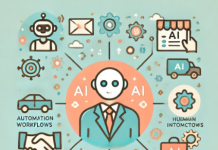 Businesses do well with content marketing when planning up front is exercised along with effective use of common resources.
Businesses do well with content marketing when planning up front is exercised along with effective use of common resources.
Planning and Preparing
Content marketing does not have to be hard. A strict regimen of basic elements help a marketing campaign is effective. Some of those elements include an organized schedule, research successful marketing efforts, survey customers for opinions, and follow trending news to keep up with consumers. These for elements involve having a structure to the marketing campaign to be used against an known understood audience. The upfront work includes organization and learning. The organization allows for a structured marketing campaign. The learning involves getting to know consumers and their buying habits based on current trending behavior. Without organization and learning about consumers, any marketing campaign will surely fail. Certainly upfront work before the actual marketing will make for a successful campaign launch. Traditionally successful campaigns have a solid foundation of upfront work that takes time to plan, prepare, and implement.
Multimedia Content
Today’s content marketing takes advantage of images and videos. The copywriting effort will not fully satisfy the marketing of a product or service. Consumers have gotten into the habit of responding to mind stimulating content marketing items that have images and pictures that tell more to the story. Today’s consumers move quickly, make fast decisions, and have less patient than those of many years ago. The fast delivery of a marketing message that images and pictures add has become necessary as part of any marketing campaign. The consumers of today receive an abundant supply of ad information daily. Years ago, less ads and marketing campaigns allowed time for consumers to read the fine print. Today, the message must show competitiveness in a concise manner. With quality imaging and filming, content marketing has improved. Special effects and graphics add more power and meaning to content. The vibrant colors have a greater stimulating effect on consumers.
Creating and Curation Case Studies
Consumers trust subject matter experts on products and services. Those who know the industry and demonstrate knowledge tend to do better in marketing. A way they do that involves publishing case studies to demonstrate understanding and expertise. Case studies authenticate knowledge of a company for an industry. Consumers recognize that the business knows how the entire industry works. This evokes trust.It shows that a business knows the industry so well that they know their competitors well too; well enough to undercut competitors in price and exceed them in quality. Providing case studies forces a business to show responsibility in knowing their industry, as they should. Consumers expect only the best who know not only their products or service, but the industry as well. The curation of the case studies from competitor’s websites help consumers make easy comparisons and make the choice to select the proven subject matter expert. Consumers tend to rely on experts and worry less on the cost. To help consumers, learn a business that offers an encyclopedia of terms and expressions help them understand what a business offers.
Reusing marketing content
A business spends so much time on creating marketing content. Often cost savings come from the recycling of content marketing resources. For example, old blog posts convert easily to content for brochures, an ebook, or a white paper. It may also serve as content for a webinar. One blog post can go a long way. Consumers become educated with content combined on a slide-share presentation on a website. Case studies produced are distributed to slide-share presentations, blogs, and white papers. Any content produced continues longevity by recycling. The most cost effective recycling of content includes public presentations, interviews, press releases, and more. Rewritten content can be introduced as new and presented fresh giving newness. The more content is recycled, the more a business can have a fresh look and a feel of being in continuous content with buyers. Consumers connect well with companies that seem like they are introducing new content frequently.












